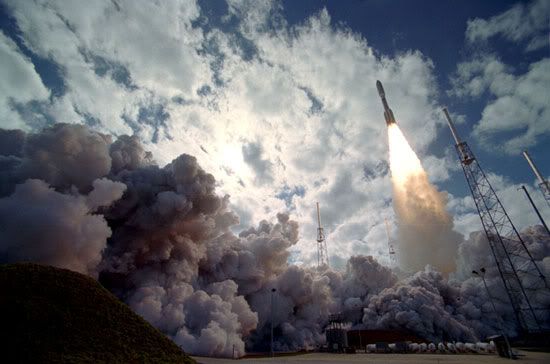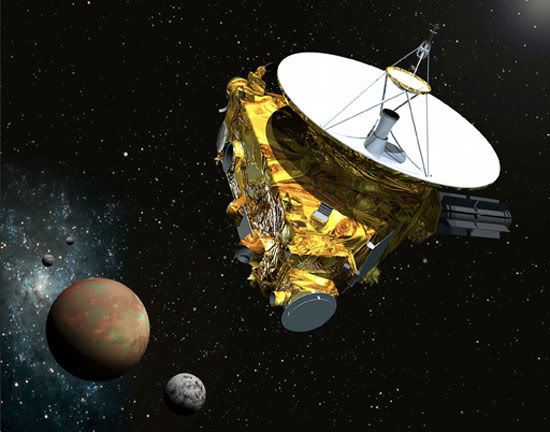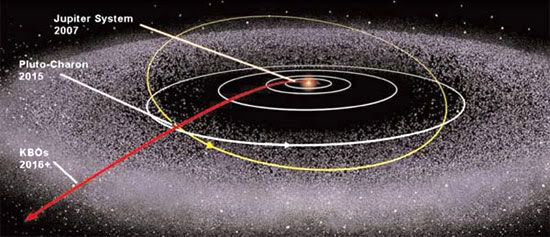
Photo by Ben Cooper of LaunchPhotography.com
PLUTO-BOUND!! Following a 52-minute delay because of low cloud cover, the Atlas V rocket finally lifted off from Cape Canaveral Air Force Station in Florida at 11:00 AM (Pacific Standard Time)...sending the New Horizons spacecraft on its way to Pluto. New Horizons will pass by the moon within 9 hours (8 hours, 35 minutes to be exact), pass Mars' orbit in less than 3 months from now (on Thursday, April 6), and fly by Jupiter on February 28, 2007. Today's successful launch oughta make NASA feel vindicated (yet again)...considering the past few weeks' controversy over the anti-nuke demonstrators protesting against the launch of New Horizons. I guess you'll have to wait till 2009 to create more noise, eh Global Network Against Weapons & Nuclear Power (2009 is when the plutonium-powered Mars Science Laboratory rover is set to launch)? Hopefully, much like the launches of New Horizons, Cassini and Galileo, your protests will once again be a waste of time when MSL takes off. And don't forget the Boeing labor union, whose majority of workers are still currently on strike (I think), that wanted the launch to be delayed because it deemed the six non-striking workers who attached the third stage rocket motor to New Horizons (last month) to be "unqualified." Anyways, onward to Pluto! And the Kuiper Belt. New Horizons will pass by the ninth planet in the solar system on July 14, 2015.

UPDATE (January 20: 11:30 AM, PST): 24 hours after launch, New Horizons is already about 1 million miles away from Earth. Below is a checklist of all the activities that will be done over the next 3 weeks to get the spacecraft up and running for the remainder of its decade-long flight:
Day 1: First contact, command to flight mode, configure thermal control, turn Inertial Measurement Units (IMUs) on, "burp" and prime the propulsion lines.
Day 2: Thermal management and guidance system checkouts.
Days 3-8: Navigation system and sensor checks, guidance system checks, tracking to refine the spacecraft's trajectory.
Day 9: First trajectory correction.
Day 11: Second trajectory correction (if needed).
Days 12-19: Additional guidance and navigation system checks, spacecraft trajectory refinement.
Day 20: LORRI (LOng Range Reconnaissance Imager) and PEPSSI (Pluto Energetic Particle Spectrometer Science Investigation) instruments, communications and power checks.
Day 21: Third trajectory correction (if needed).

ABOVE: The 3 billion mile-long flight path that New Horizons will take through the cosmos on
its way to Pluto...and after that, the icy debris region known as the Kuiper Belt. Once the
mission ends, New Horizons will eventually depart the solar system and enter interstellar
space, where it will wander the galaxy for millions of years.

No comments:
Post a Comment